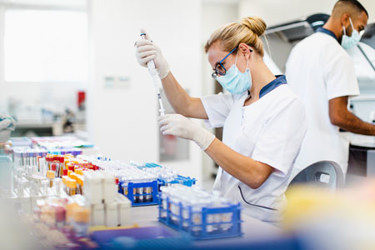Evaluating Buoyancy Activated Cell Sorting (BACS) For T Cell Isolation In CAR-T Manufacturing
By Jeff Cram, Sharlene Amador, Chesney Michels, Supriya Prakash, Mercedes Segura, and Mike Paglia

As the CAR T and TCR cell therapy landscape evolves, there is a growing need for manufacturing solutions that reduce cost and complexity to improve patient access to these transformative therapies. Rigorous process development and characterization are essential to delivering safe and potent drug products. Traditional autologous CAR T and TCR cell therapy manufacturing begins with T cell isolation from patient leukapheresis material, typically using Magnetic Activated Cell Sorting (MACS). This method involves magnetic nanoparticles coated with antibodies to select and separate specific cells, but it requires expensive equipment, magnetic columns, reagents, and skilled operators, making the process costly and complex.
An alternative approach that may improve manufacturability is Buoyancy Activated Cell Sorting (BACS), a negative selection method for T cell isolation. BACS uses antibody-coated microbubbles that bind to and remove contaminating cells like B cells, monocytes, granulocytes, and red blood cells. These microbubbles are produced under cGMP conditions, free of animal material, and consist of glass-polystyrene microspheres with a gaseous core, making them buoyant in the surrounding buffer. The microbubbles cause bound cells to float to the top, allowing untouched T cells to remain at the bottom and be easily separated.
BACS offers advantages over MACS, as the negatively selected T cells are free of bound antibodies, making them more suitable for downstream assays such as flow cytometry without interference from magnetic beads. This could also make them ideal for shorter T cell processing workflows. This study aimed to evaluate the feasibility of BACS technology and compare the performance of T cells isolated using BACS to those isolated with MACS in a GMP-representative CAR T manufacturing process. Additionally, the study explored using GMP-grade microbubbles to isolate untouched T cells directly from whole blood, a less invasive and cost-effective alternative to leukapheresis, though it presents challenges due to the high volume of red blood cells.
Get unlimited access to:
Enter your credentials below to log in. Not yet a member of Cell & Gene? Subscribe today.
